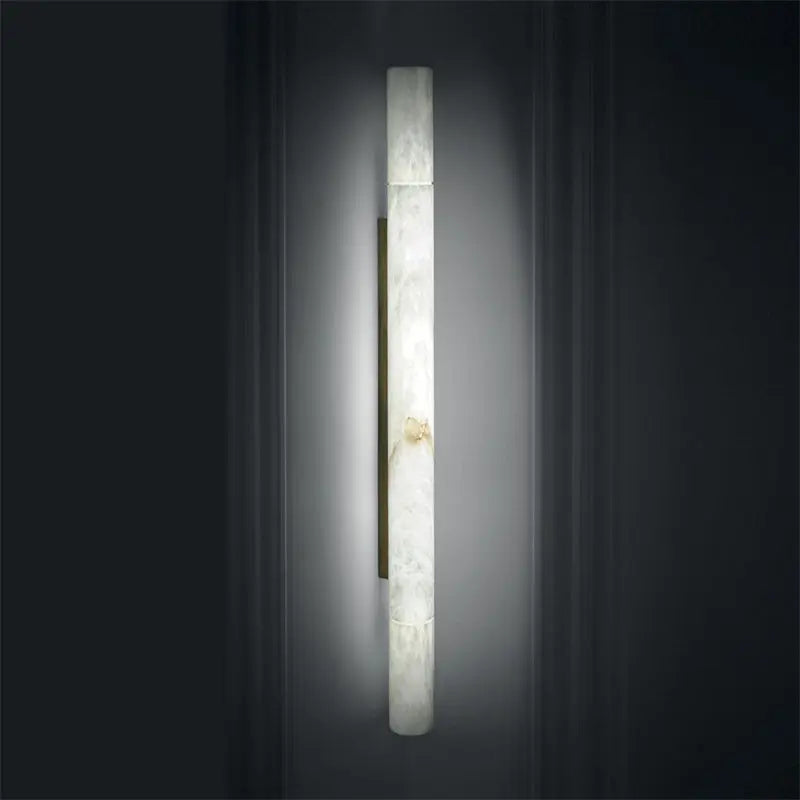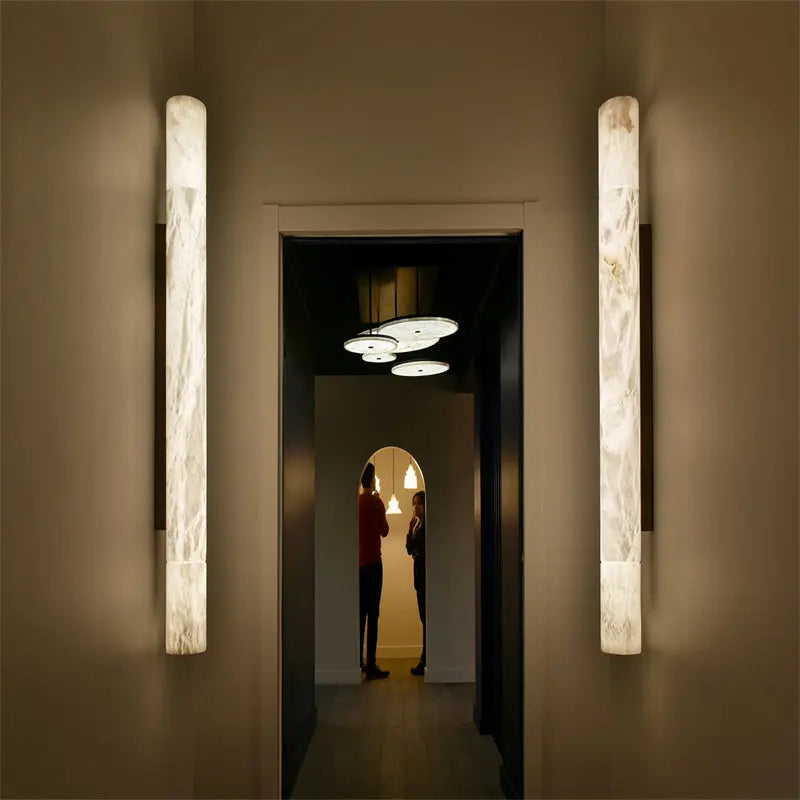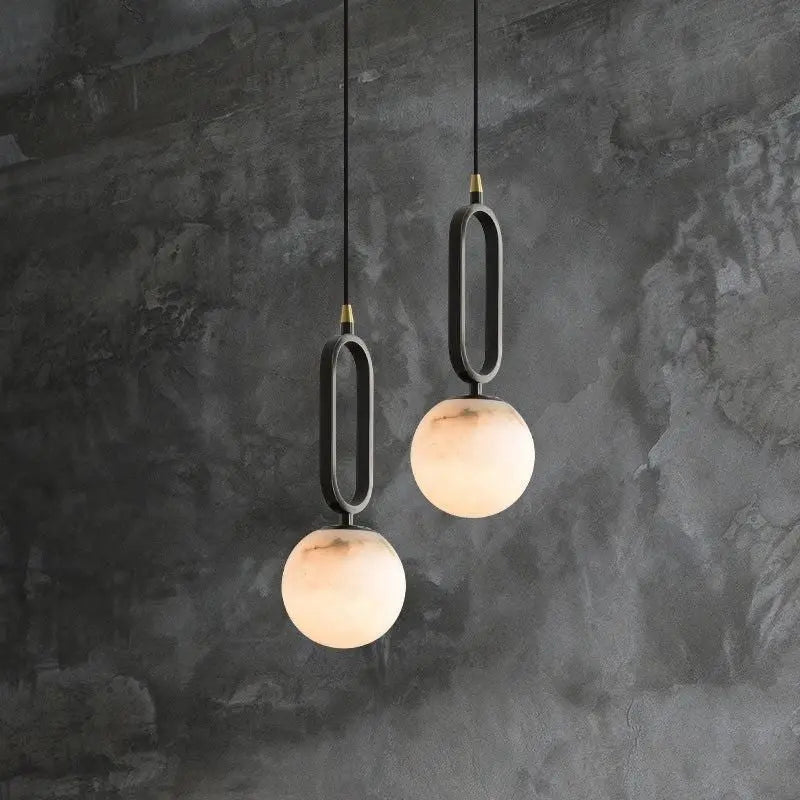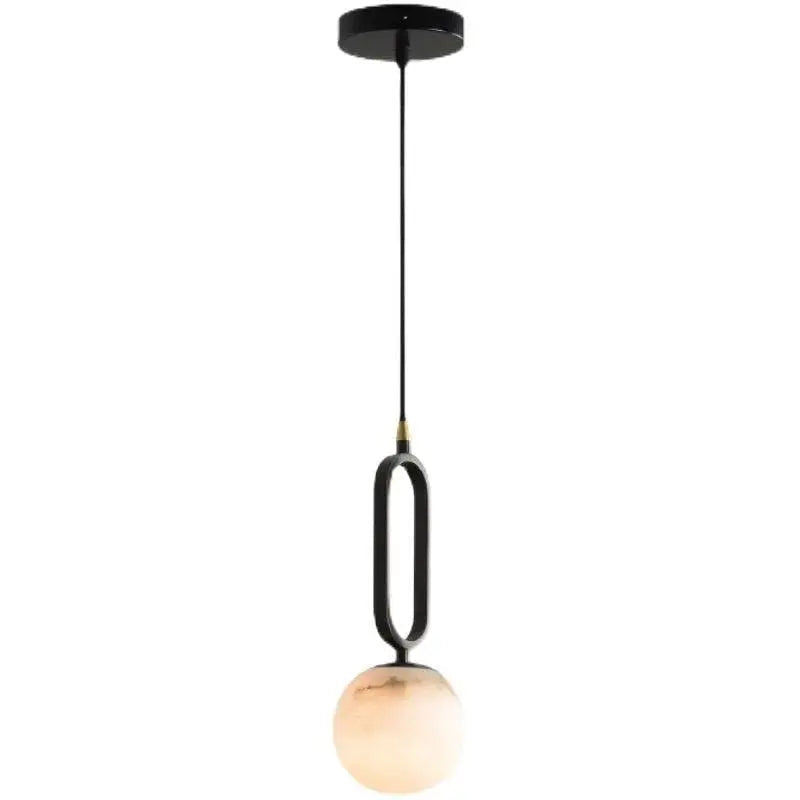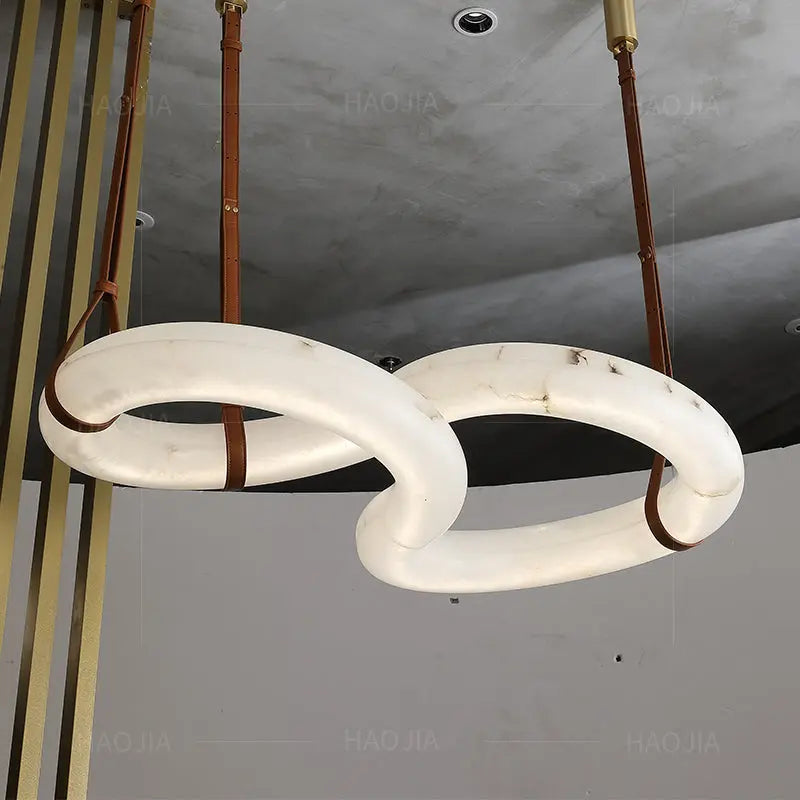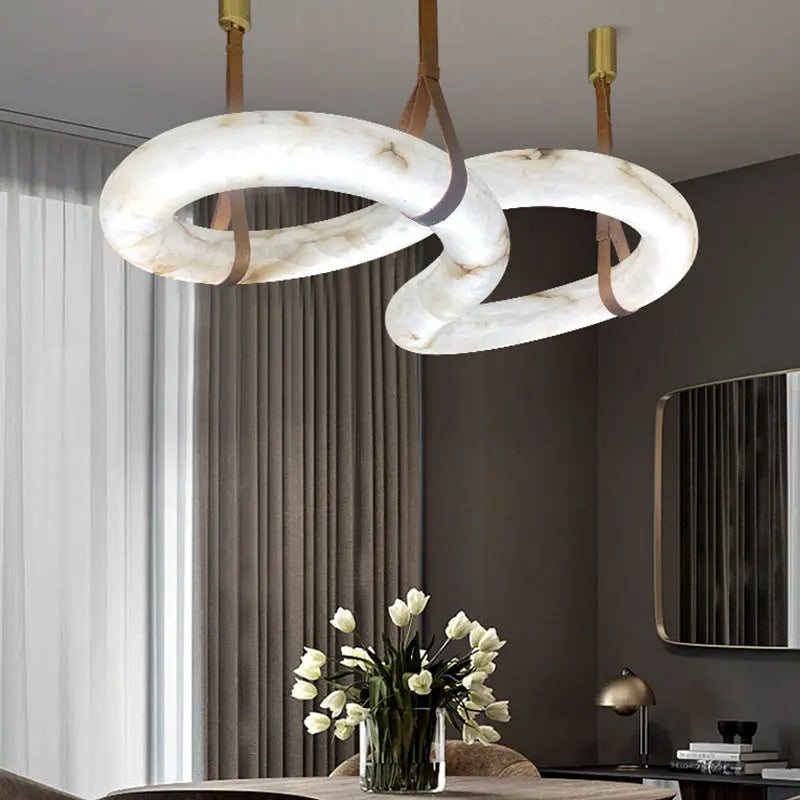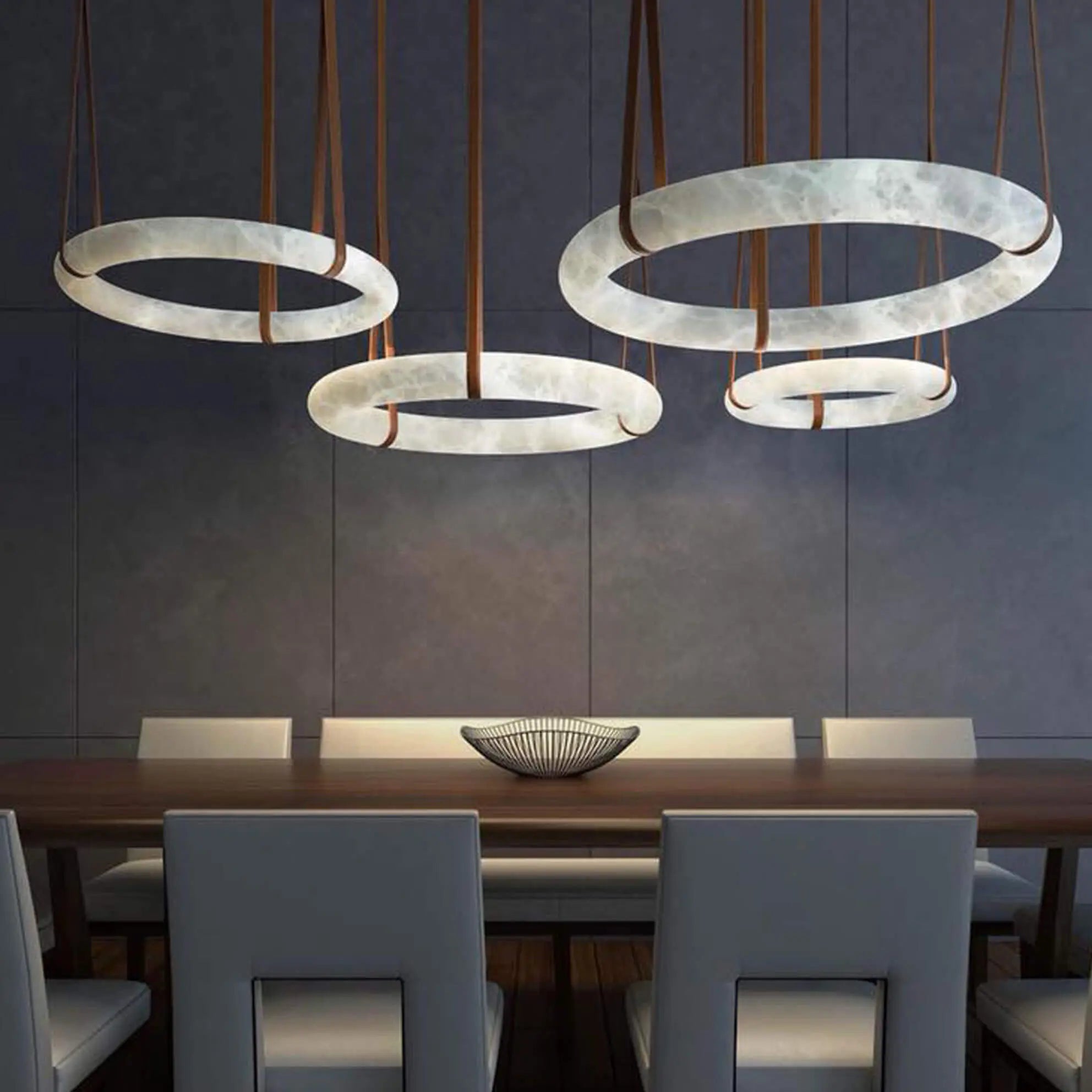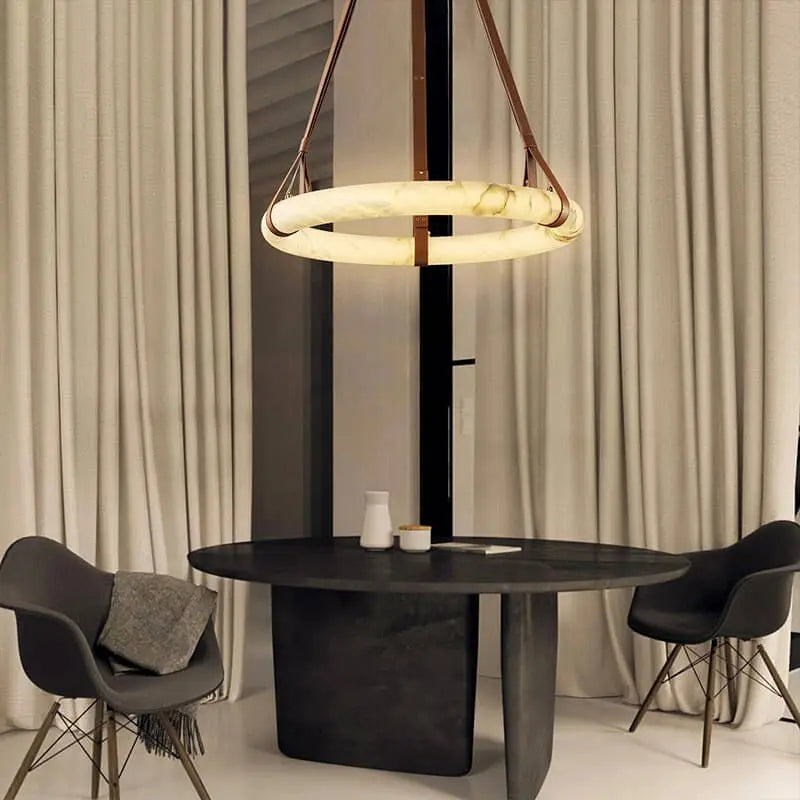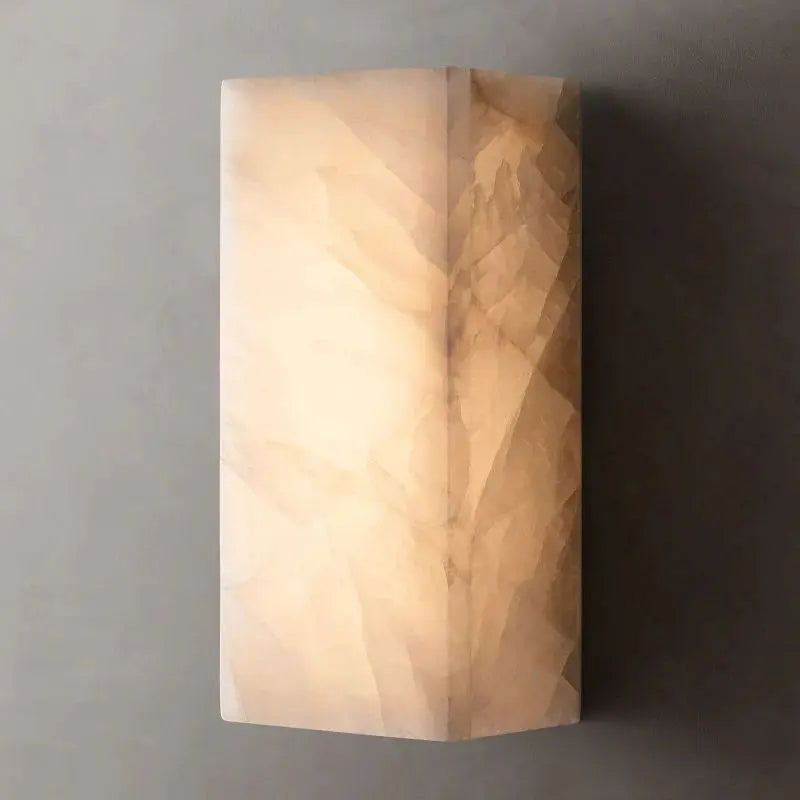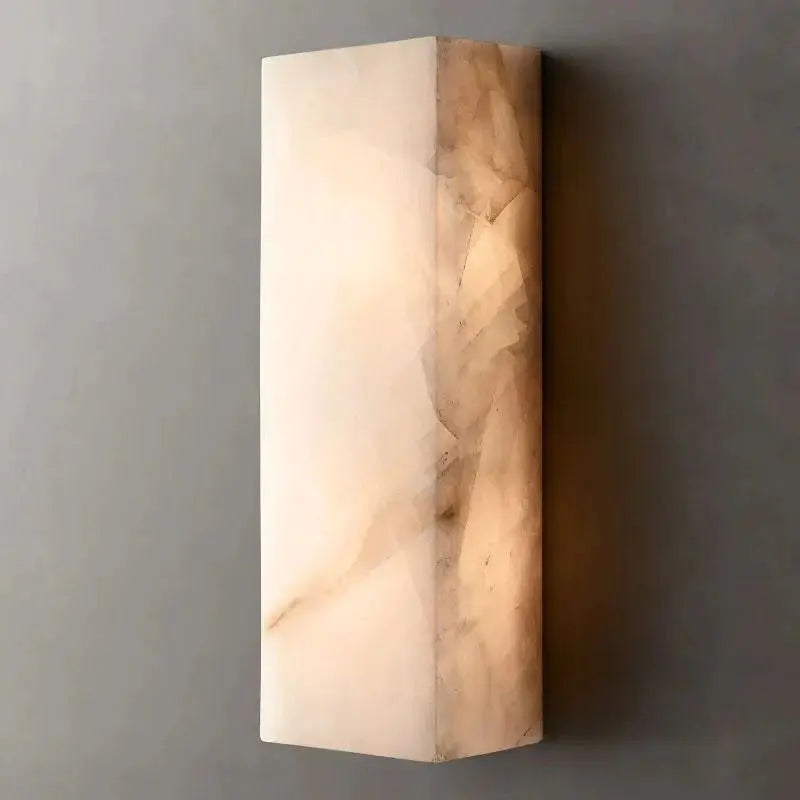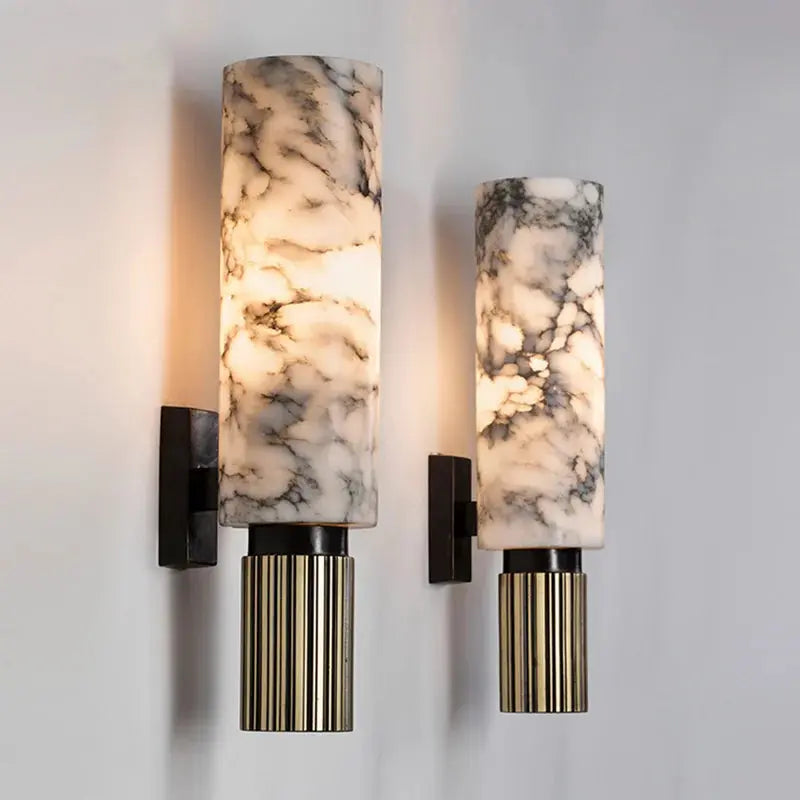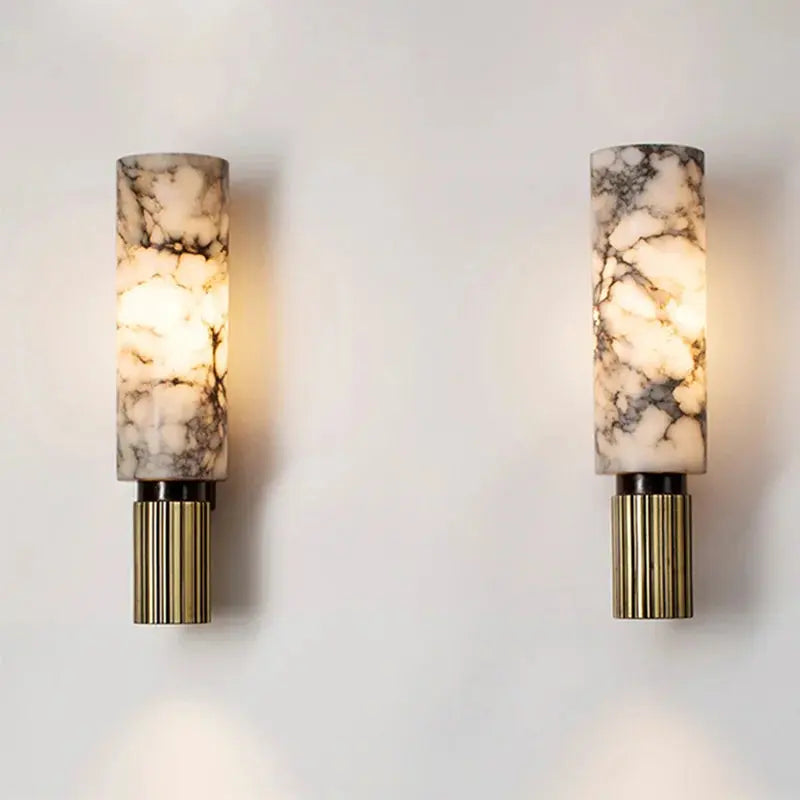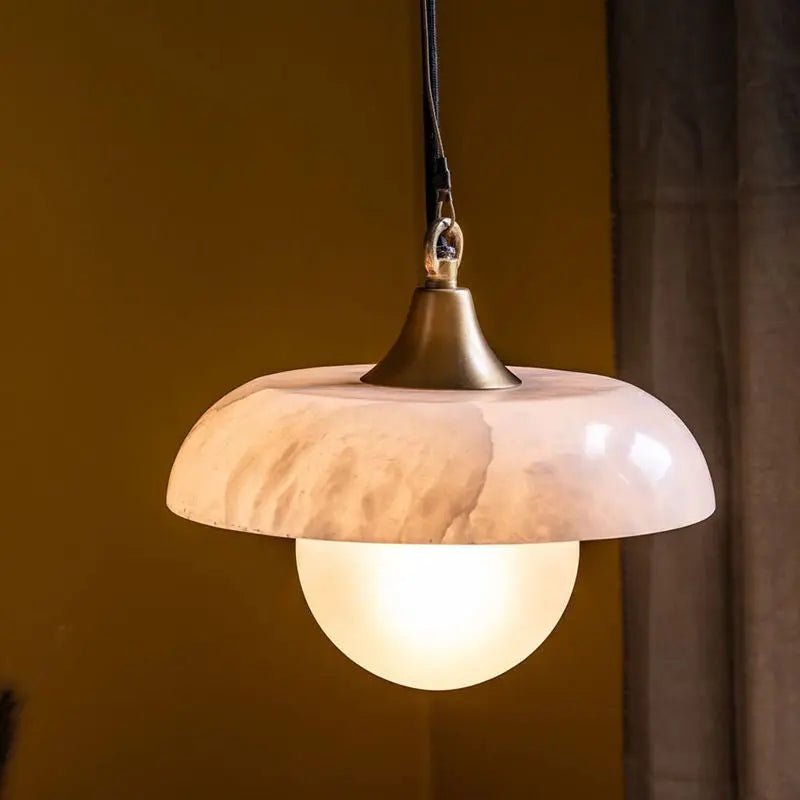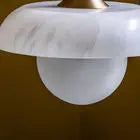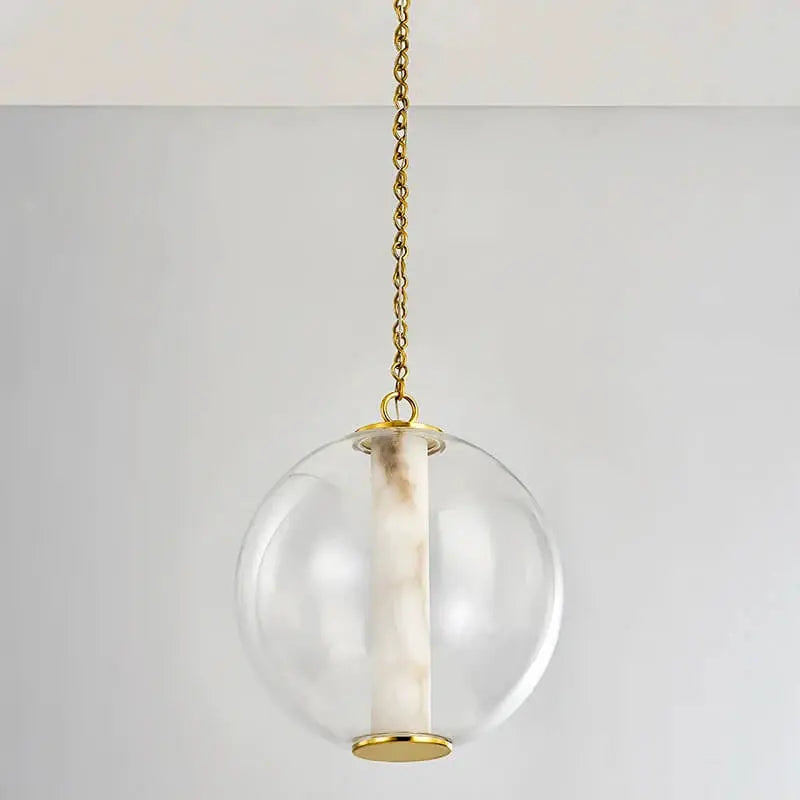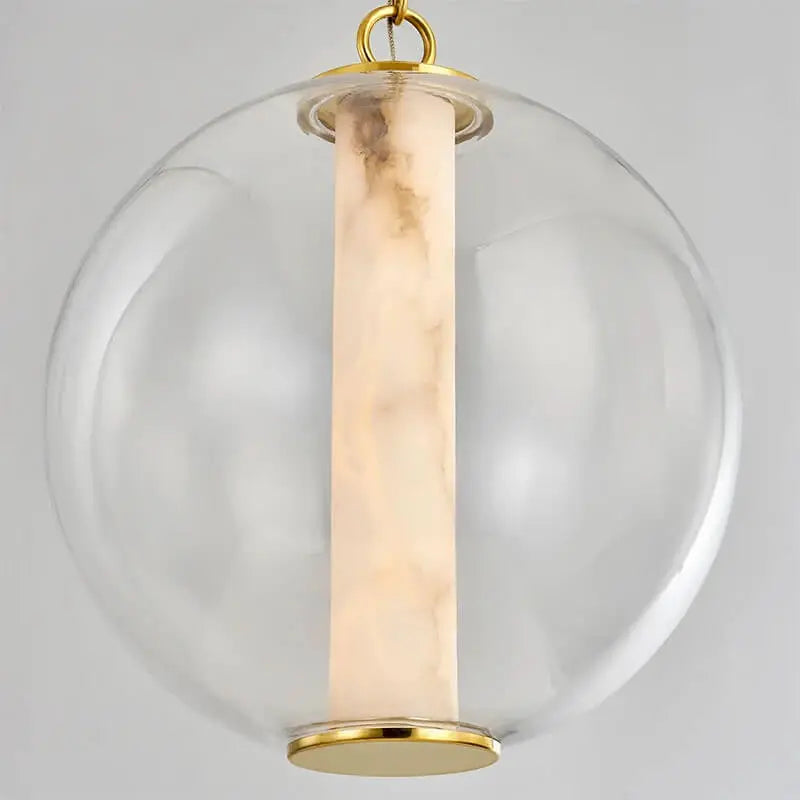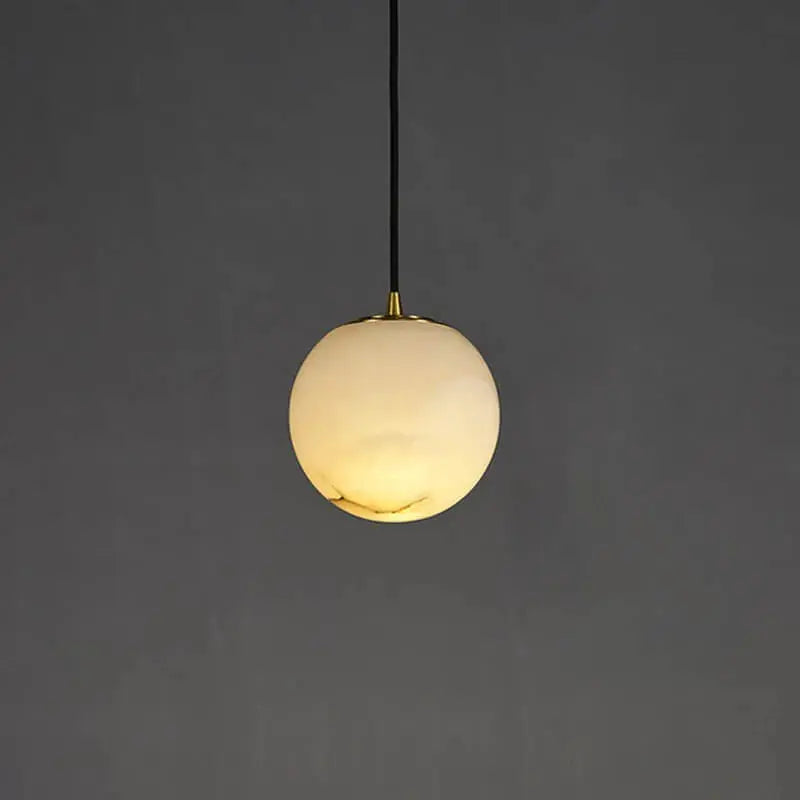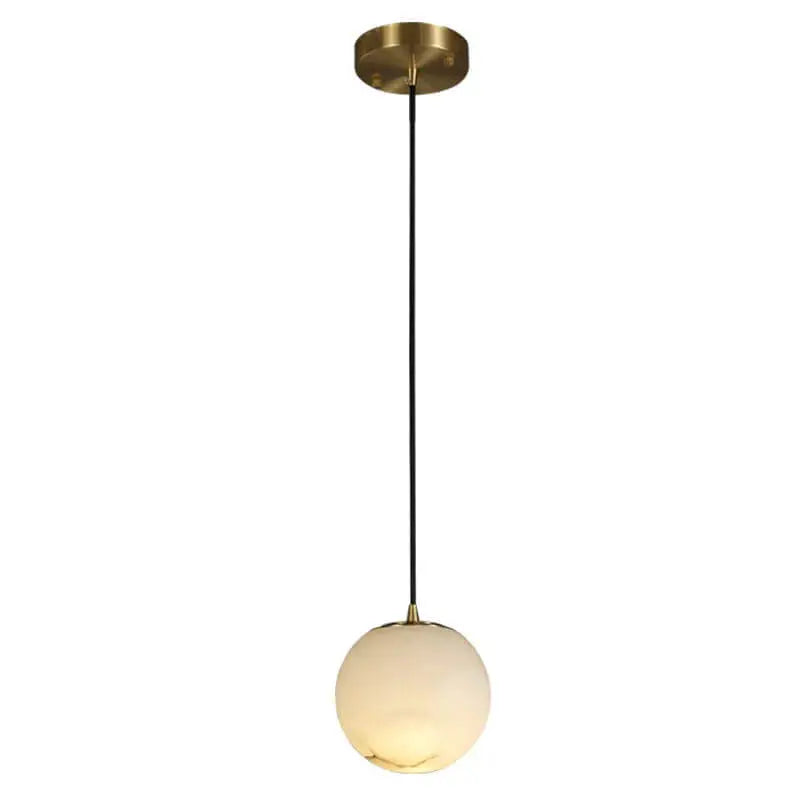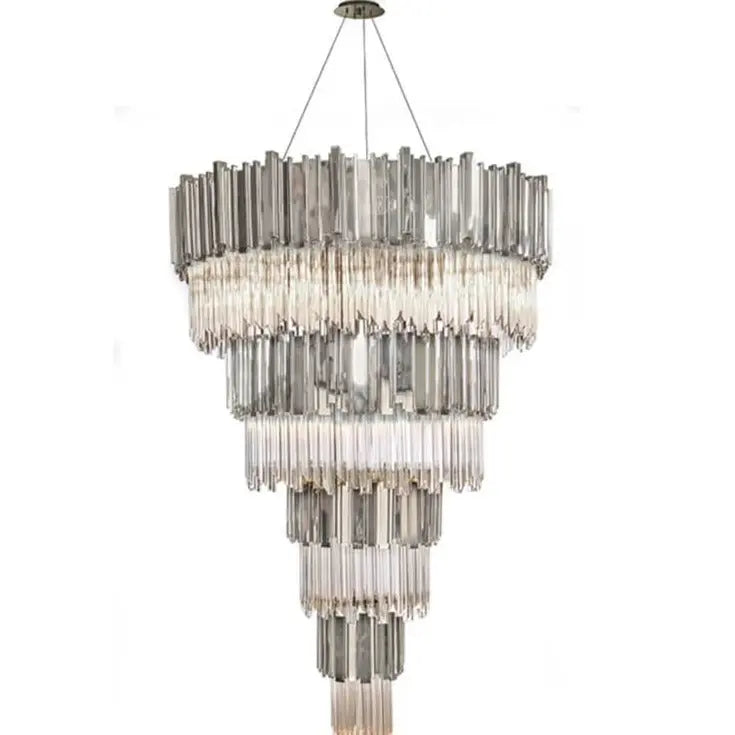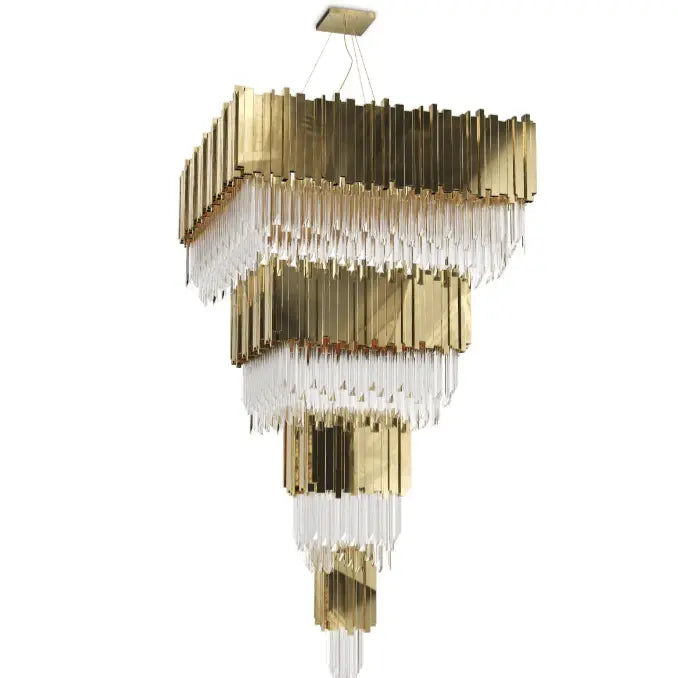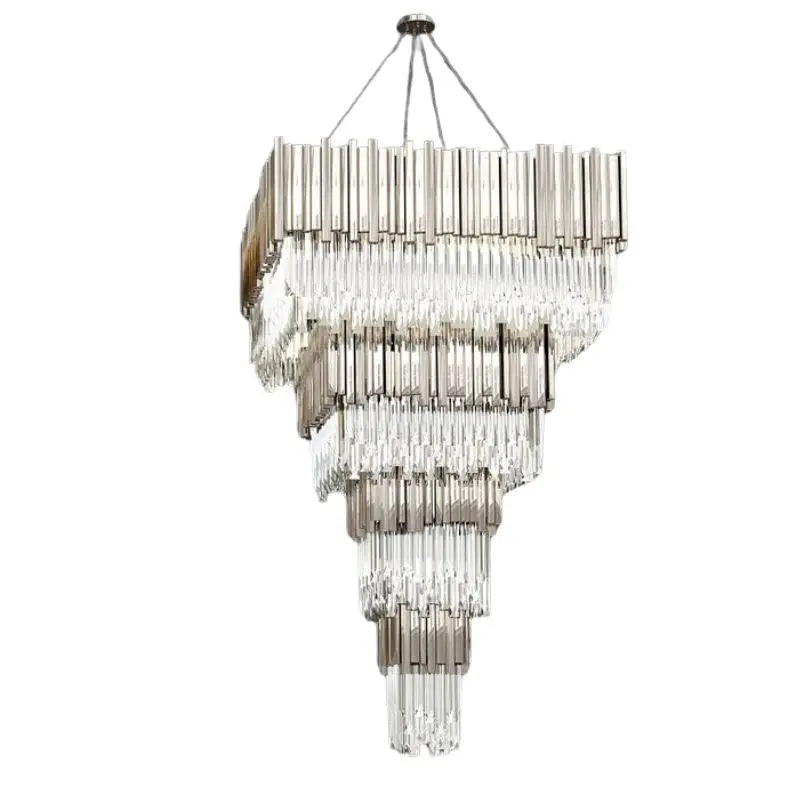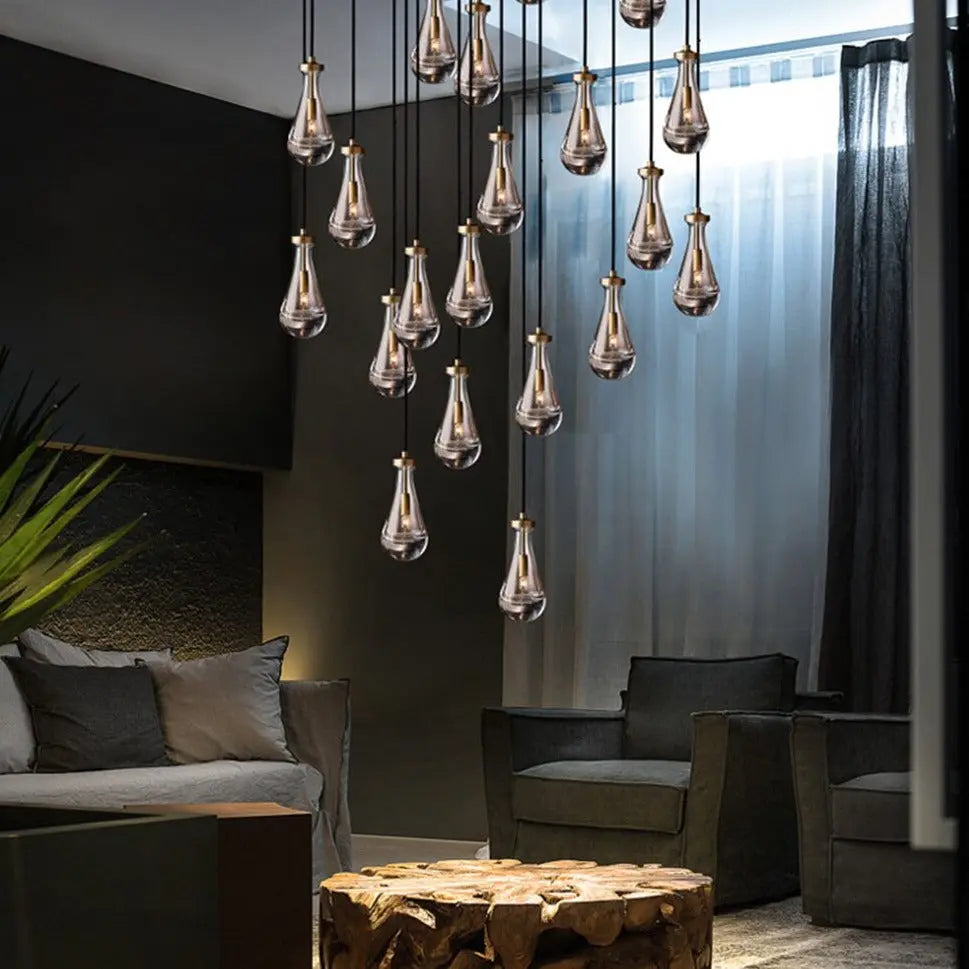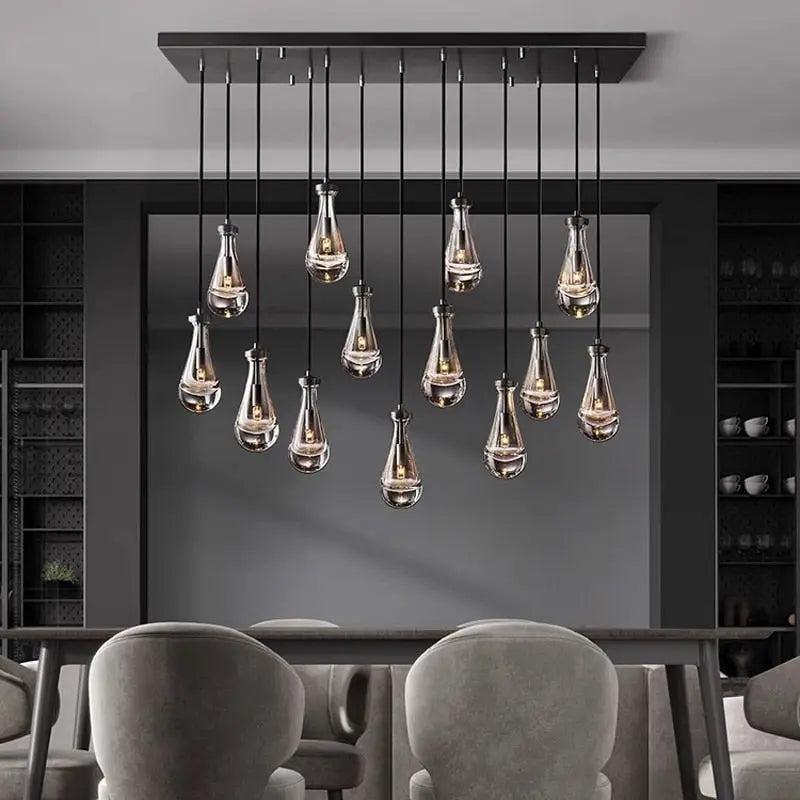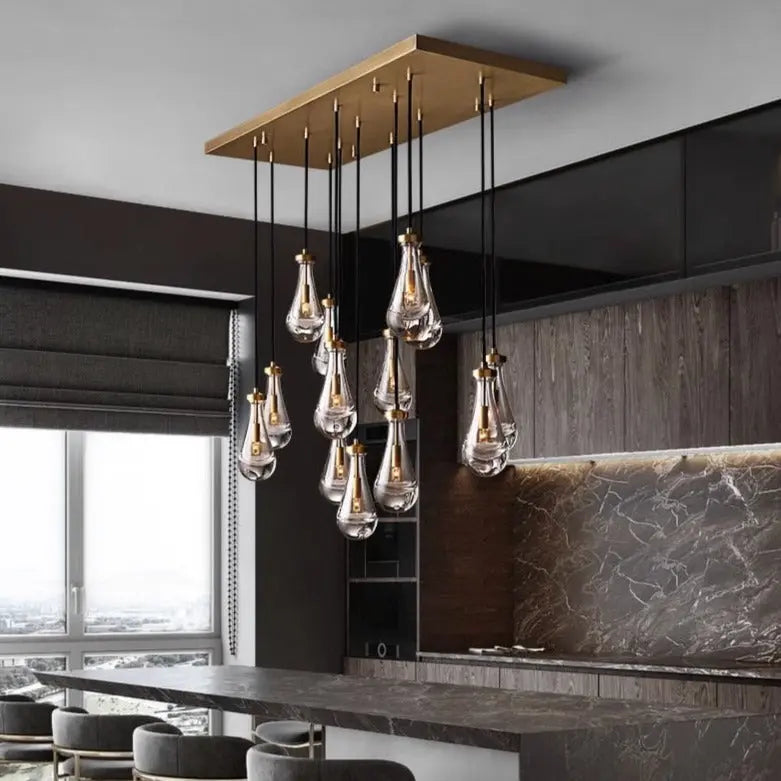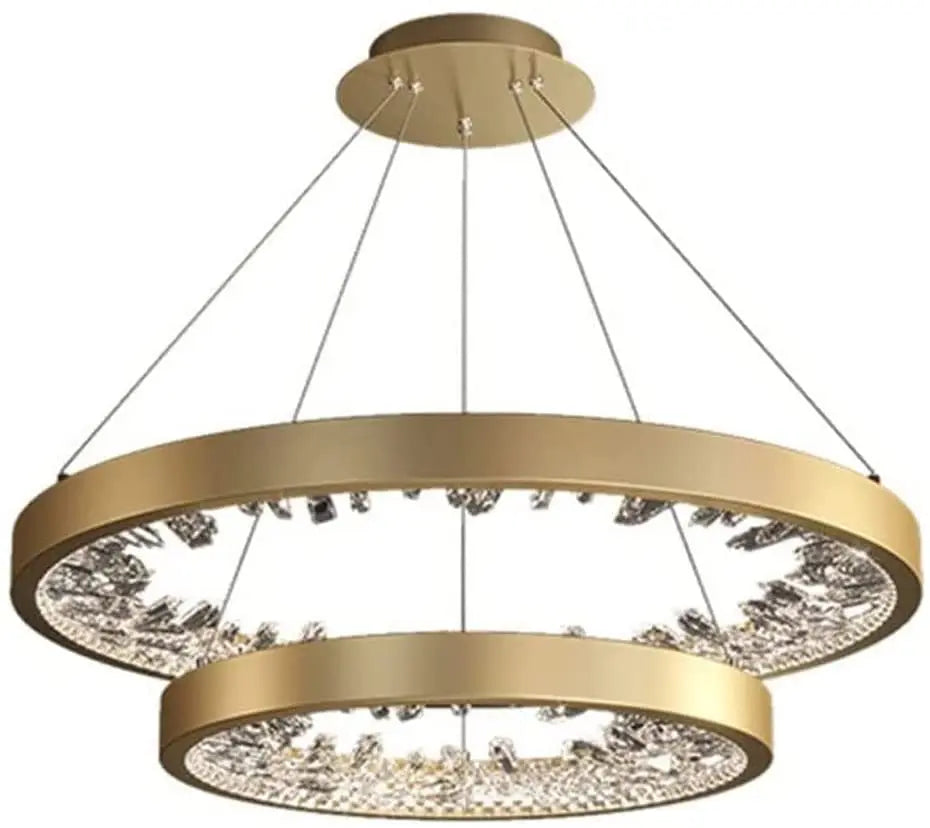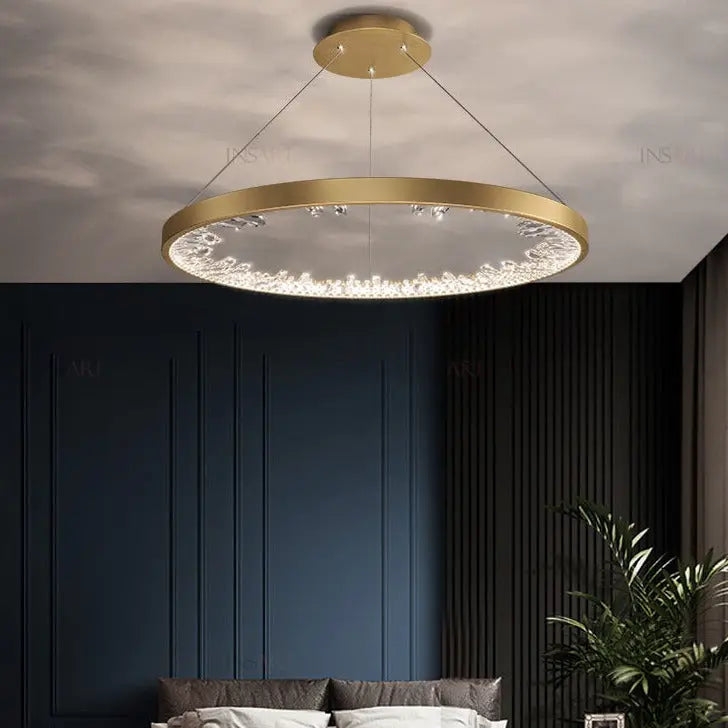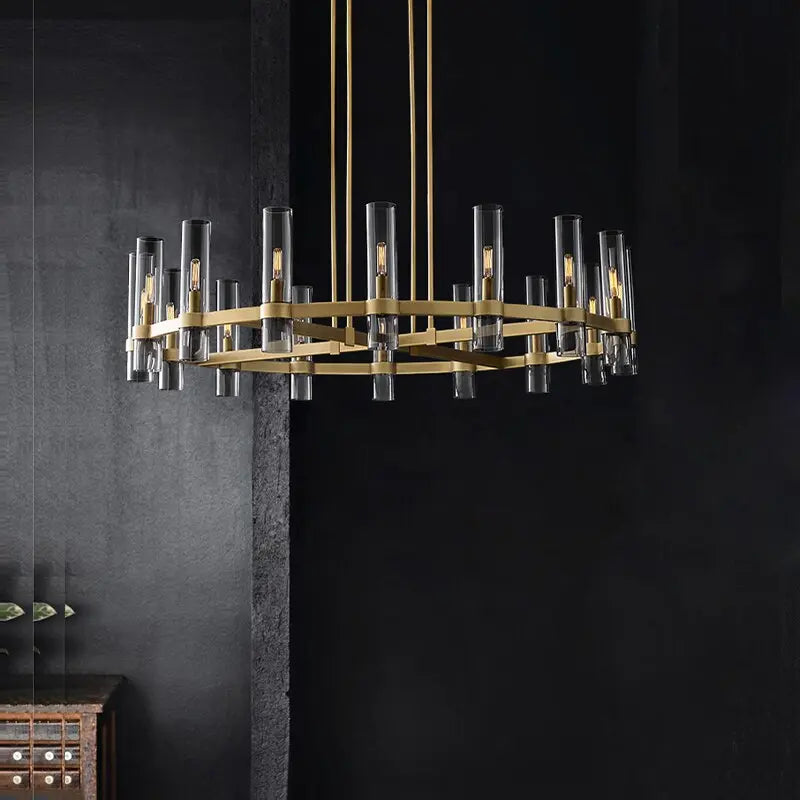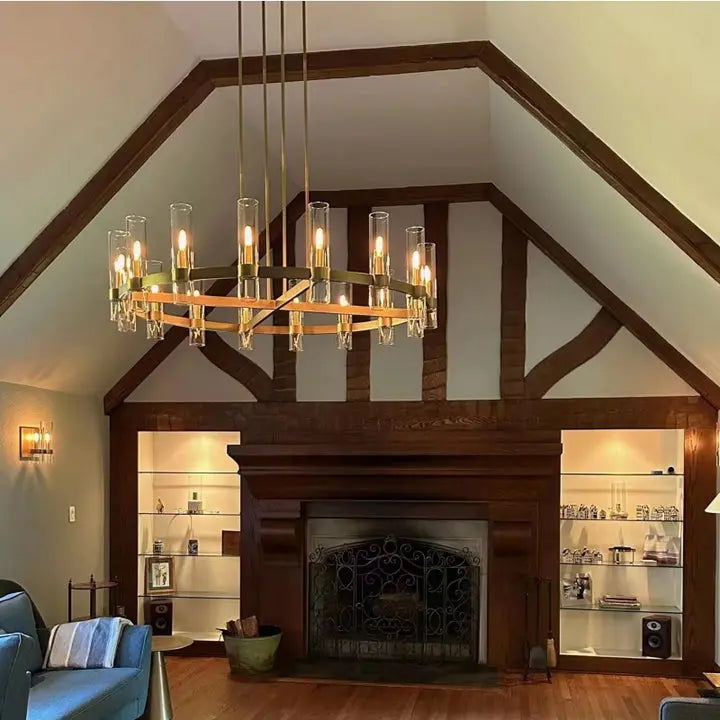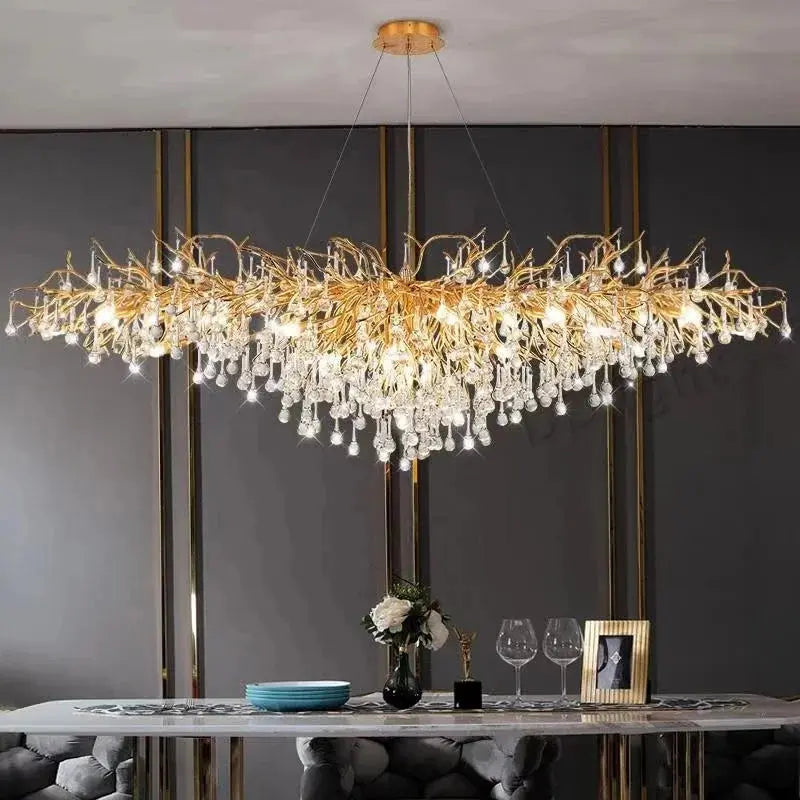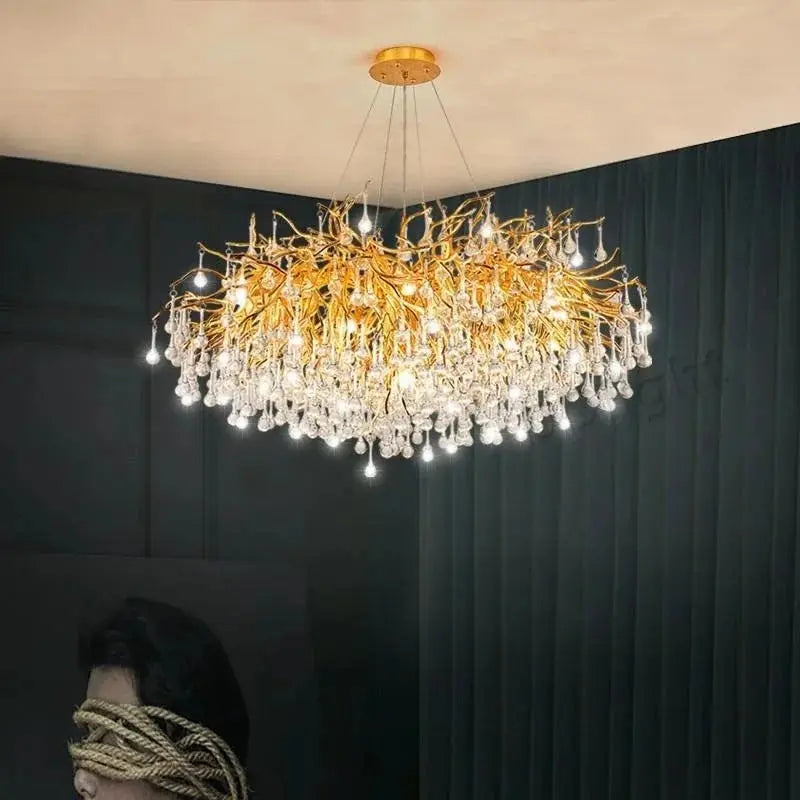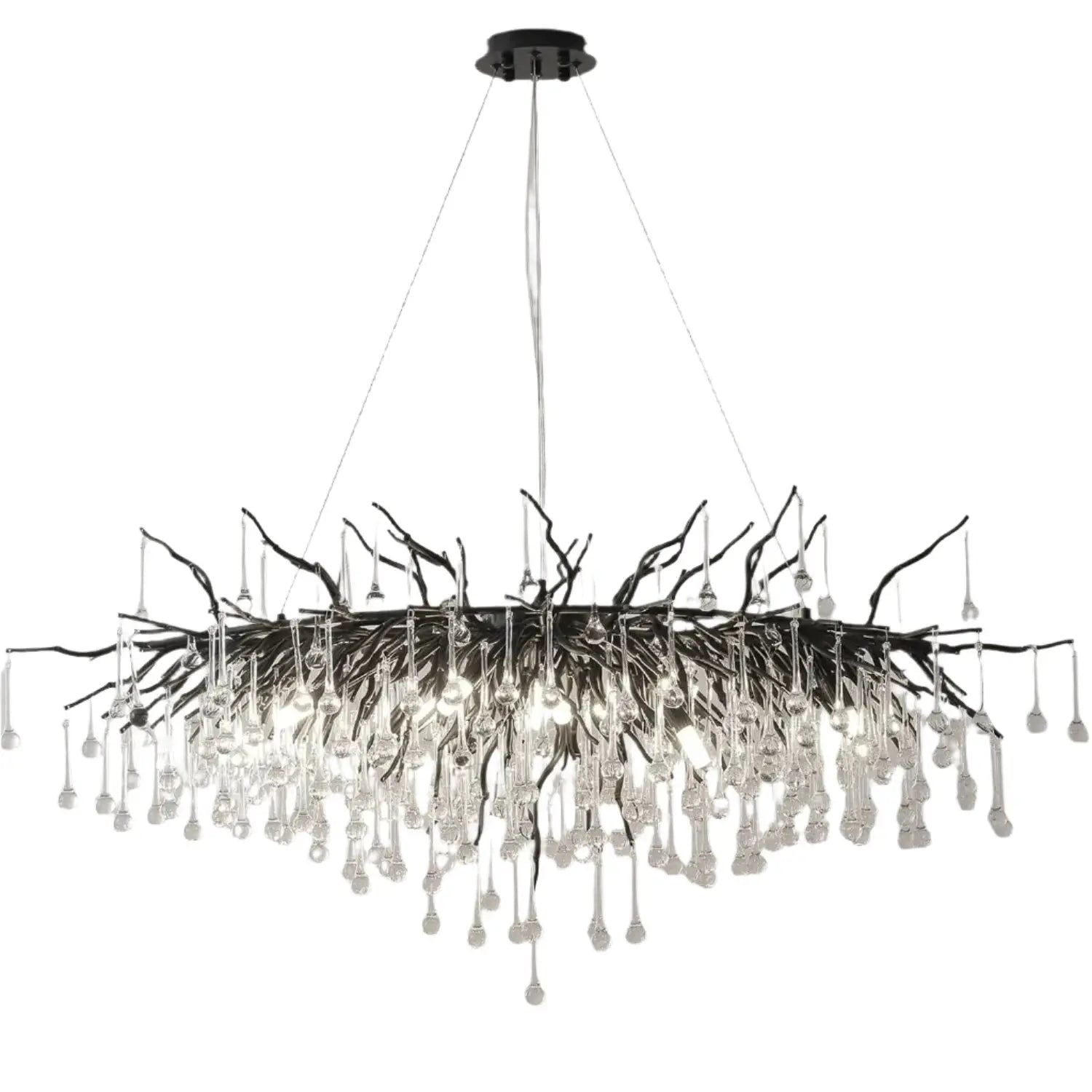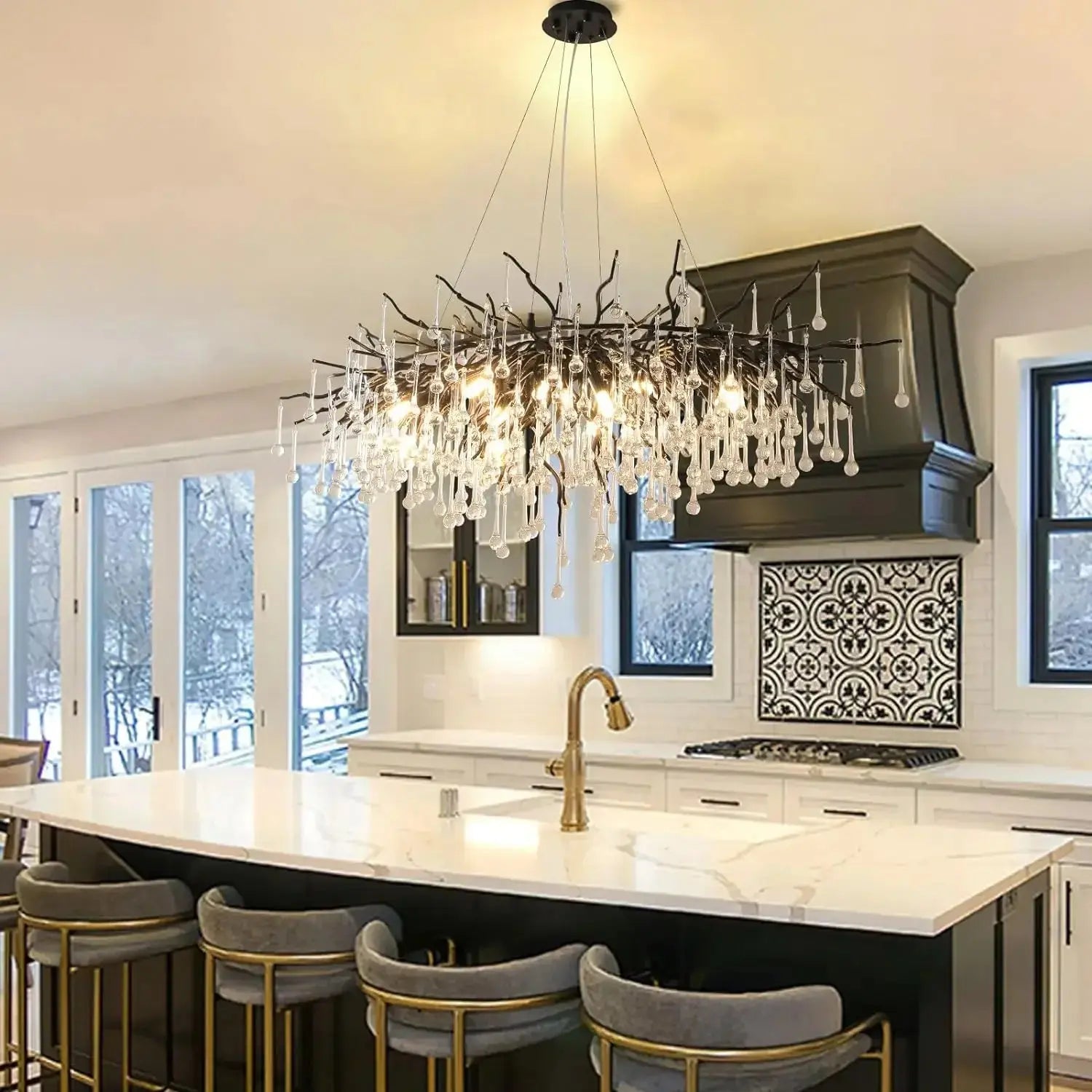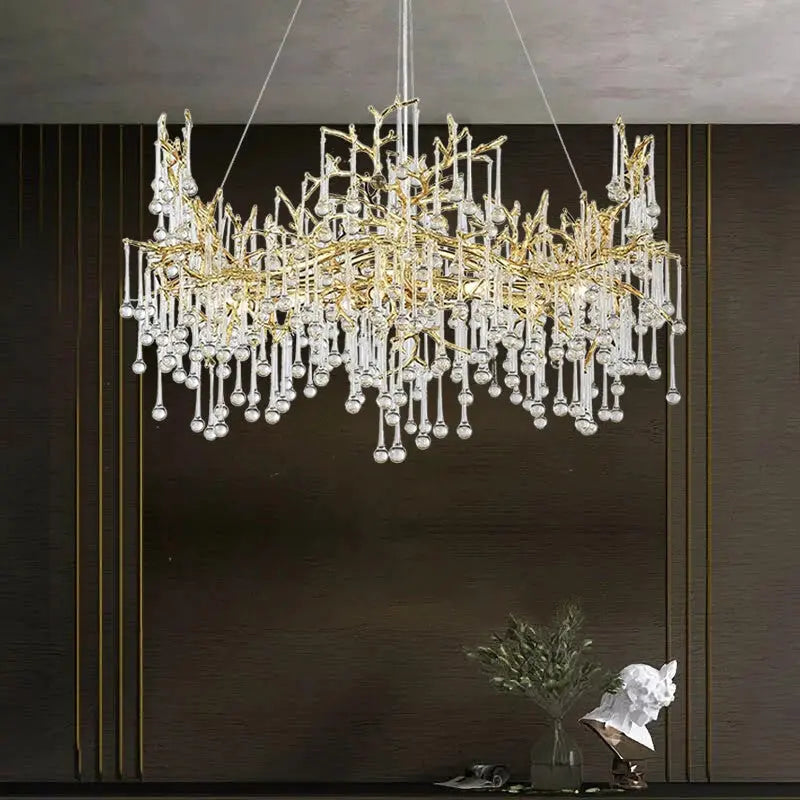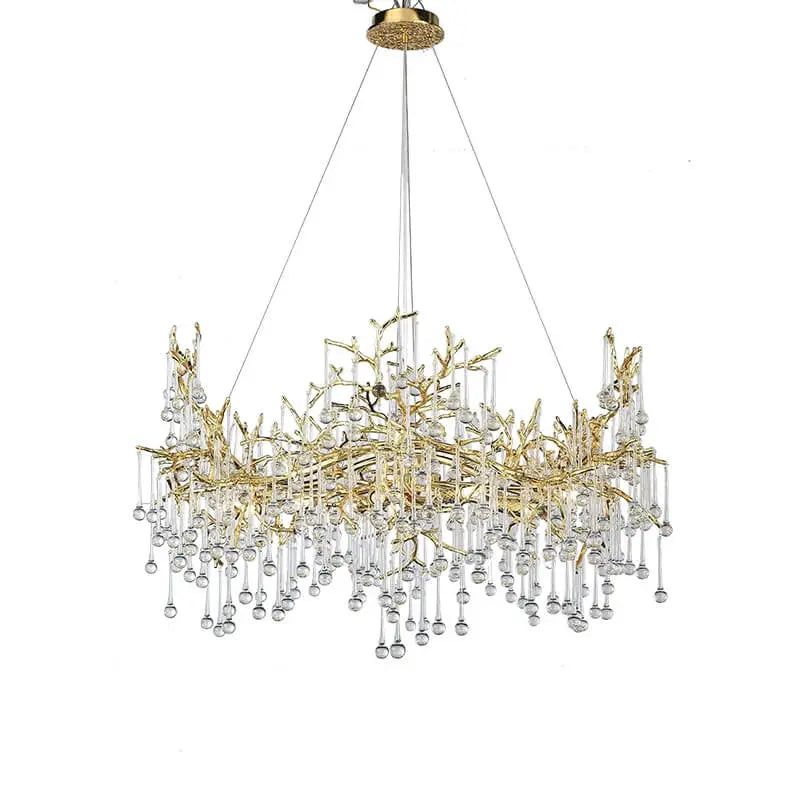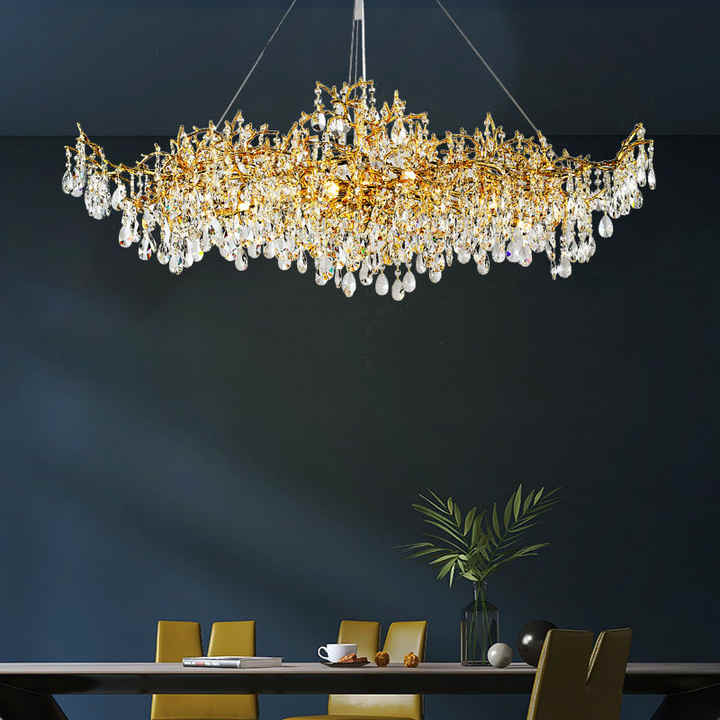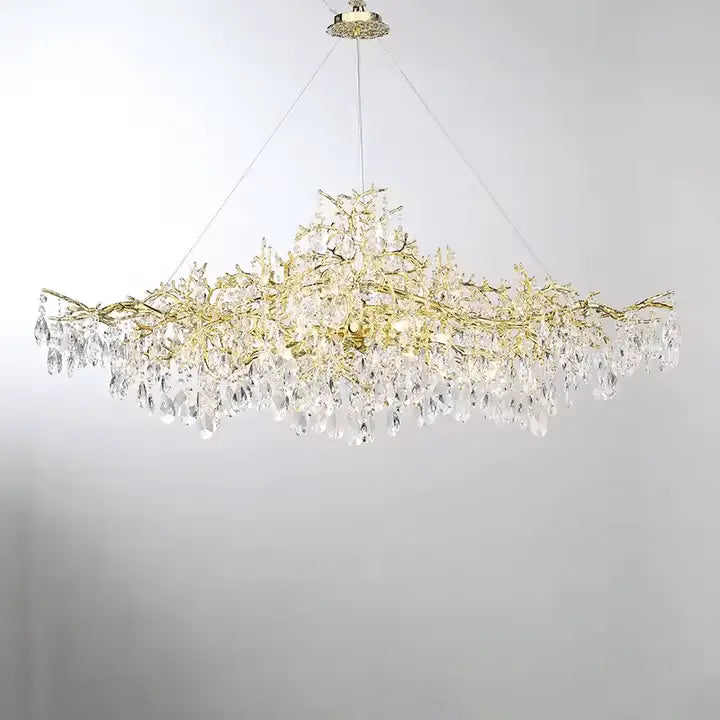Choosing a chandelier for vaulted ceilings can really change the vibe of your space. With their unique height and structure, these ceilings offer a great opportunity to showcase a statement piece. But, it’s not just about looks; you also need to think about how the chandelier fits in with the room's function and style. So, let’s explore how to pick the perfect chandelier that blends both style and functionality.
Key Takeaways
- Think about the size and style of your room when picking a chandelier for vaulted ceilings.
- Use layered lighting to create depth and highlight architectural features.
- Choose materials that fit your decor and are easy to clean.
- Make sure to install it correctly with secure mounting and the right height.
- Select a chandelier that enhances the overall feel of your space.
Understanding the Impact of Modern Chandeliers on Vaulted Ceilings
The Aesthetic Appeal of Modern Chandeliers
Modern chandeliers? They're not just light fixtures anymore. Think of them as ceiling art. If you're lucky enough to have vaulted ceilings, a cool chandelier can really make the space feel grand. It draws your eyes up, showing off that height. Whether you go for something sleek and simple or a wild, artistic design, a modern chandelier can become the main attraction when people walk in. It just makes everything feel a bit more special. It's more than just light; it's about adding character. You can find light bulbs that match the chandelier's style.
Creating a Focal Point with Height
Vaulted ceilings are awesome, but sometimes they can feel a little...empty. That's where a chandelier comes in. It fills the vertical space and gives your eye something to focus on. A well-chosen chandelier can turn your vaulted ceiling from just an architectural detail into a stunning focal point, adding both style and function to your space. Don't be afraid to choose a chandelier that reflects your personal style and enhances the beauty of your home.
Enhancing Architectural Features
Chandeliers can do more than just look pretty; they can actually highlight the best parts of your room. Got some cool beams? A chandelier can draw attention to them. Interesting angles? A chandelier can emphasize those too. It's all about using light to show off what makes your space unique. Think of it as jewelry for your home. A layered lighting techniques can help maximize the light.
Getting the lighting right in a room with a vaulted ceiling can totally transform the space. It's not just about seeing; it's about creating a mood and highlighting the best features of your home.
Selecting the Right Modern Chandelier for Your Vaulted Ceiling
Factors to Consider When Choosing a Chandelier
Picking out a chandelier for a vaulted ceiling isn't just about grabbing the prettiest one you see. It's about finding something that actually works in your space. The size of your room is the first thing you should think about. A huge chandelier in a small room will look ridiculous, and a tiny one in a big room will just disappear. You want something that feels right.
Here's a few things to keep in mind:
- Ceiling Height: Vaulted ceilings are high, but you still need to make sure the chandelier isn't hanging so low that people bump into it. Consider the hanging height carefully.
- Room Style: Is your room modern, rustic, or something else? The chandelier should match the vibe. A super modern chandelier might look weird in a traditional room.
- Light Needs: Chandeliers aren't just for show; they're for light! Think about how much light you actually need in the room. Is it the main light source, or just accent lighting?
Getting the lighting right can totally transform the space. It's not just about seeing; it's about creating a mood and highlighting the best features of your home.
The Role of Materials in Chandelier Selection
The material of your chandelier can make a big difference in how it looks and feels. Glass chandeliers can be elegant and sparkly, while metal chandeliers can be more modern and industrial. Wood chandeliers can add warmth and a rustic touch. Think about what materials are already in your room and try to match them. Also, consider how easy the material is to clean. Some materials, like crystal, can be a pain to dust.
Common Styles for Vaulted Ceilings
There are a few styles that tend to work really well with vaulted ceilings:
- Statement Chandeliers: These are big, bold, and designed to grab attention. They're great for filling up a large space and becoming a focal point.
- Linear Chandeliers: These are long and narrow, perfect for long, narrow rooms with vaulted ceilings. They help balance the space and provide even lighting.
- Geometric Chandeliers: These are great for modern spaces. They add a touch of contemporary style and can create interesting visual patterns.
Installation Tips for Modern Chandeliers on Vaulted Ceilings

Determining the Correct Hanging Height
Okay, you've picked out a killer chandelier for your vaulted ceiling. Now comes the slightly tricky part: getting it hung at the right height. The key is proportion and clearance. You don't want people bumping their heads, but you also don't want the chandelier to look like it's floating way up in the stratosphere.
Generally, you want the bottom of the chandelier to be at least 7 feet from the floor. If it's above a dining table, aim for 30-36 inches above the table surface. For larger rooms, you can go a bit lower, but always prioritize headroom. Use a measuring tape to visualize the height before you even start the install. It's also a good idea to have someone hold the chandelier up (carefully!) at different heights so you can get a feel for what looks best.
Ensuring Secure Mounting
Vaulted ceilings can present some unique challenges when it comes to mounting a chandelier. You can't just screw into drywall and hope for the best! You need to find a ceiling joist or use a proper mounting bracket that can support the weight of the fixture.
Here's a quick rundown:
- Locate the Joist: Use a stud finder to find a solid joist in the ceiling. This is your best bet for a secure mount.
- Reinforce if Needed: If you can't find a joist in the ideal location, you might need to install a brace between two joists to provide a solid mounting point.
- Use the Right Hardware: Make sure you're using screws and bolts that are rated for the weight of your chandelier. Err on the side of caution here – it's better to overbuild than to risk the chandelier crashing down.
- Consider a Swag Kit: For heavier chandeliers, a swag kit can help distribute the weight and provide extra support.
Always turn off the power at the breaker before you start any electrical work. If you're not comfortable working with electricity, hire a qualified electrician. It's not worth risking your safety (or your house!) to save a few bucks.
Adjusting for Ceiling Angles
One of the trickiest aspects of installing a chandelier on a vaulted ceiling is dealing with the angle. Most chandeliers are designed to hang straight down, so you'll need to make some adjustments to ensure it looks right.
Here are a couple of options:
- Sloped Ceiling Adapter: These adapters allow you to adjust the angle of the chandelier's canopy so it hangs level, even on a sloped ceiling.
- Chain or Downrod: Use a chain or downrod to give the chandelier some flexibility. This will allow it to hang straight down, regardless of the ceiling angle. You might need a longer chain or downrod than you would for a standard ceiling.
It's also important to make sure the chandelier's wiring is long enough to accommodate the angle. You don't want to strain the wires or create a fire hazard. Double-check everything before you finalize the installation.
Layered Lighting Techniques for Vaulted Ceilings

Vaulted ceilings are great, aren't they? They give a room a spacious feel. But getting the lighting just right can be a bit of a puzzle. You don't want it too dim, too bright, or just plain boring. Let's explore how to really make the most of that height with light.
Combining Ambient, Task, and Accent Lighting
Layered lighting is really the key here. Think of it like making a sandwich – you need different ingredients to make it tasty. It's the same with lighting! You need a mix of different types of lights to give your space depth and character. Start with ambient lighting to cover the whole area, then add task lights for specific spots, and finally, accent lights to highlight cool features. It's all about creating a vibe. For example, you can use recessed lighting for general brightness, pendant lights over a kitchen island for task lighting, and spotlights to show off artwork.
- Ambient lighting: Recessed lights are great for keeping things bright and even.
- Task lighting: Pendant lights or track lighting can focus light where you need it.
- Accent lighting: Wall sconces or spotlights can highlight architectural details.
Layering light is not just about aesthetics; it's about functionality. It allows you to control the mood and usability of a space, making it adaptable to different activities and times of day.
Using Dimmer Switches for Flexibility
Dimmers are your best friends. Seriously. Being able to adjust the brightness of your lights can totally change the feel of a room. Bright light for cleaning or working, and soft, dimmed light for relaxing in the evening. It's all about control. Plus, dimmers can help you save energy, which is always a good thing. Consider installing dimmer switches on your modern chandeliers and other light fixtures to create the perfect ambiance for any occasion.
Choosing the Right Bulbs for Brightness
Bulbs matter! It's not just about the fixture itself, but also what kind of bulb you put in it. LED bulbs are a great choice because they last a long time and don't use as much energy. Think about the color temperature too. Warm light (around 2700K) is cozy and relaxing, while cool light (around 5000K) is brighter and more energizing. Here's a quick guide:
| Bulb Type | Brightness (Lumens) | Color Temperature (Kelvin) | Best Use |
|---|---|---|---|
| LED | 800 | 2700K | Living room, bedroom |
| LED | 1600 | 3000K | Kitchen, dining room |
| LED | 2200 | 5000K | Home office, workspace |
Common Mistakes to Avoid When Choosing a Chandelier
Overlooking Scale and Proportion
It's easy to get excited about a beautiful chandelier, but hold on a sec! One of the biggest mistakes people make is choosing a chandelier that's the wrong size for their space. A tiny chandelier in a huge room will look silly, and a massive one in a small room will be overwhelming.
Here's a simple guide to help you get it right:
- Room Size: Measure the length and width of your room in feet. Add those numbers together. The resulting number, in inches, is a good starting point for the diameter of your chandelier.
- Ceiling Height: For every foot of ceiling height, your chandelier should be about 2.5 to 3 inches tall. So, for a 10-foot ceiling, aim for a chandelier that's 25-30 inches tall.
- Dining Tables: If you're hanging a chandelier over a dining table, it should be about half to two-thirds the width of the table.
Don't just eyeball it! Take the time to measure your space and do the math. It'll make a huge difference in how the chandelier looks and feels in the room. You want it to complement the space, not fight against it.
Ignoring the Room's Style
Another common mistake is picking a chandelier that clashes with the rest of your decor. You might love that super modern, geometric chandelier, but if your living room is all about cozy, rustic charm, it's not going to work. Think about the overall style of your room and choose a chandelier complements that fits in.
Here are some style matching tips:
- Modern: Sleek lines, metal finishes, minimalist designs.
- Traditional: Crystal accents, ornate details, classic shapes.
- Rustic: Wood elements, wrought iron, natural textures.
- Bohemian: Colorful glass, unique shapes, eclectic designs.
Neglecting Maintenance Considerations
Okay, so you've found the perfect chandelier. Awesome! But have you thought about how you're going to keep it clean? Chandeliers, especially those with lots of crystals or intricate details, can be a pain to maintain. Dust and grime can build up over time, making them look dull and dingy. Before you buy, consider how much effort you're willing to put into cleaning. Metal and glass are usually easier to wipe down, while crystal might require more specialized cleaning products and techniques. Also, think about how accessible the chandelier is. Will you need a ladder to reach it? Is it easy to take apart for cleaning? If you're not up for the maintenance, you might want to choose a simpler design. Make sure you get the right mounting for your ceiling type.
Enhancing Your Space with the Right Chandelier
Creating a Cohesive Look with Decor
Choosing the right chandelier isn't just about light; it's about making your whole room look like it belongs together. Think of your chandelier as a key piece that ties everything else in the room together. It should complement your furniture, wall colors, and overall style. If you've got a modern space, a sleek, minimalist chandelier will probably work better than something super ornate. If your style is more traditional, then a classic crystal chandelier might be the way to go.
Using Color and Finish to Match
The color and finish of your chandelier can make a big difference. You don't want it to clash with everything else in the room. Consider the existing color palette and choose a chandelier that either blends in or provides a complementary contrast. For example, if you have a lot of warm wood tones, a chandelier with a bronze or gold finish could look great. If your room is mostly cool colors, a silver or chrome finish might be a better choice. Don't be afraid to use decorative chandeliers to add a pop of color, but make sure it's a color that works with the rest of your decor.
Incorporating Personal Style
Ultimately, your chandelier should reflect your personal style. It's a chance to show off your personality and make your space feel like home. Don't be afraid to get creative and choose something that you really love, even if it's a little unconventional. Here are some ideas to consider:
- If you're into a more industrial look, consider a chandelier with exposed bulbs and metal accents.
- For a touch of glam, a crystal chandelier is always a good choice.
- If you prefer a more natural vibe, look for chandeliers made from wood or other natural materials.
A chandelier is more than just a light fixture; it's a statement piece. Choose something that speaks to you and reflects your unique taste. It's a chance to add some personality to your space and make it truly your own. Think about layered lighting techniques to maximize the light.
Here's a simple table to help you think about matching your chandelier to your style:
| Style | Chandelier Type | Materials | Colors |
|---|---|---|---|
| Modern | Minimalist, Geometric | Metal, Glass, Acrylic | Silver, Black, White, Gray |
| Traditional | Crystal, Ornate | Crystal, Brass, Gold | Gold, Bronze, Clear, Ivory |
| Rustic | Wood, Wrought Iron | Wood, Wrought Iron, Rope | Brown, Black, Natural, Earth Tones |
| Bohemian | Eclectic, Colorful | Beads, Fabric, Metal | Vibrant Colors, Mixed Metals |
Maximizing Functionality with Your Chandelier Choice
Balancing Light Distribution
Okay, so you've got this awesome chandelier, but is it actually lighting up the room properly? That's the big question. You don't want dark corners or, even worse, a spotlight effect in the middle of the floor. Think about where the light is going to go. Is it spreading out evenly, or is it just a bunch of downlights? For a big room, you might need a chandelier with multiple tiers or arms to really get the light where it needs to be. Also, consider the type of shades or diffusers. Clear glass will give you the most light, while frosted glass will soften it up a bit. It's all about finding that sweet spot where you've got enough light without it being harsh.
Considering Energy Efficiency
Let's be real, nobody wants a crazy high electric bill just because they wanted a fancy light fixture. When you're picking out a chandelier, take a look at the energy efficiency. Can it use LED bulbs? LEDs are a game-changer because they use way less energy than those old-school incandescent bulbs, and they last a whole lot longer too. Plus, they don't get nearly as hot, which is a bonus. Some chandeliers even come with built-in LED systems, which can be super efficient. It might cost a little more upfront, but you'll save money in the long run. Trust me, your wallet will thank you.
Selecting Adjustable Features
Having some control over your chandelier is a major plus. Think about getting one with a dimmer switch. Dimmers are awesome because you can adjust the brightness depending on what you're doing. Movie night? Dim it down low. Having a party? Crank it up. Some chandeliers even have adjustable hanging heights, which is super useful if you're not quite sure how far down you want it to hang.
A chandelier isn't just about looking pretty; it's about making your life easier and more comfortable. Think about how you're actually going to use the space and pick a chandelier that fits those needs. It's all about finding that perfect balance between style and practicality.
Wrapping Up Your Chandelier Choice
So, when it comes to picking out a chandelier for your vaulted ceiling, remember it’s all about finding that sweet spot between style and how well it works in your space. Think about the size, shape, and material that fits your room. A good chandelier can really tie everything together and make your space feel special. Take your time to explore different options and find one that not only lights up your room but also shows off your personal taste. Your home deserves a standout piece that makes it feel just right!
Frequently Asked Questions
What kind of chandelier works best for vaulted ceilings?
The best chandelier for vaulted ceilings depends on your taste. You can choose from modern, traditional, or vintage styles. Just make sure it matches the overall look of your room.
How do you hang a chandelier on a sloped ceiling?
When hanging a chandelier on a sloped ceiling, adjust the height to fit the angle of the ceiling. Make sure it is securely attached and connected to the electrical system.
Are LED lights good for high ceilings?
Yes, LED lights are great for high ceilings. They are bright, save energy, and come in many styles to fit your needs.
What lighting options are best for slanted ceilings?
Good choices for slanted ceilings include pendant lights, track lighting, and recessed lighting. These can be adjusted to match the angle of the ceiling and provide enough light.
How can I make my vaulted ceiling look better?
To improve the look of a vaulted ceiling, use lighting to highlight its features. Choose fixtures that match your room's style for a more balanced appearance.
What should I avoid when choosing a chandelier?
Avoid picking a chandelier that is too big or too small for your space. Also, consider how it fits with your room's style and how easy it will be to clean.


